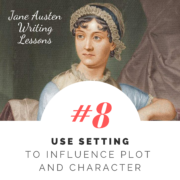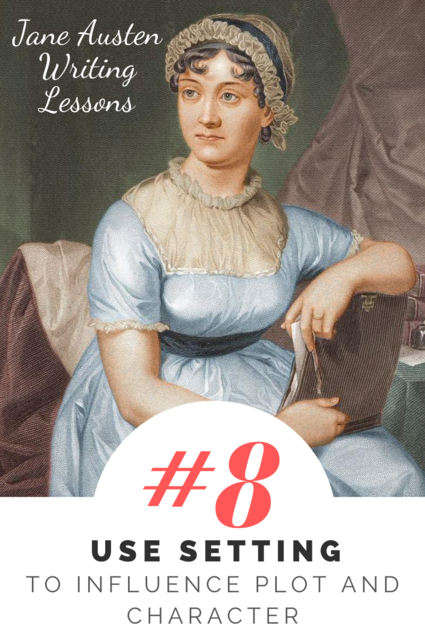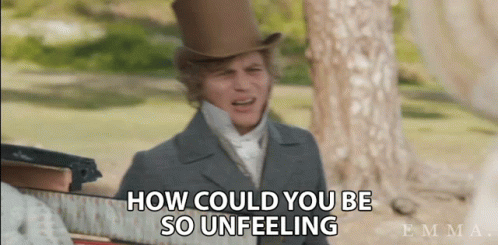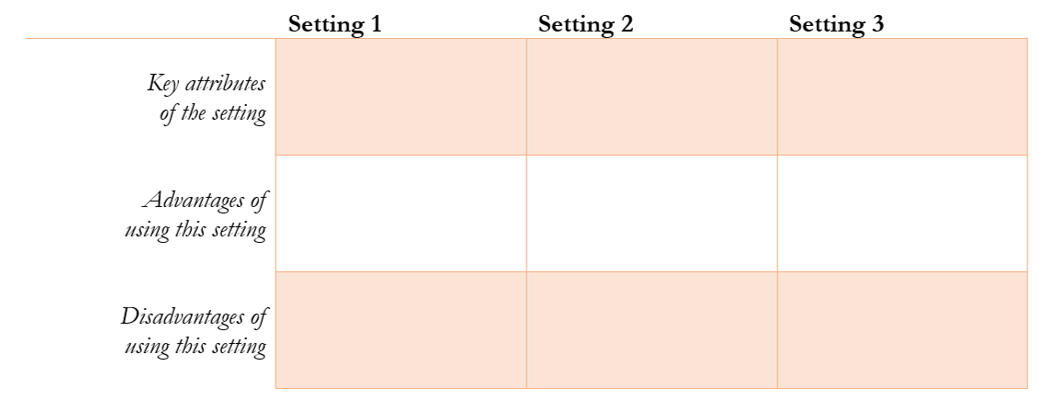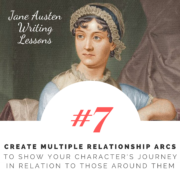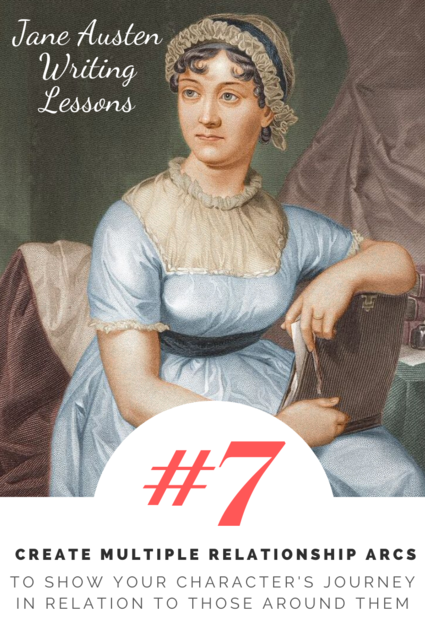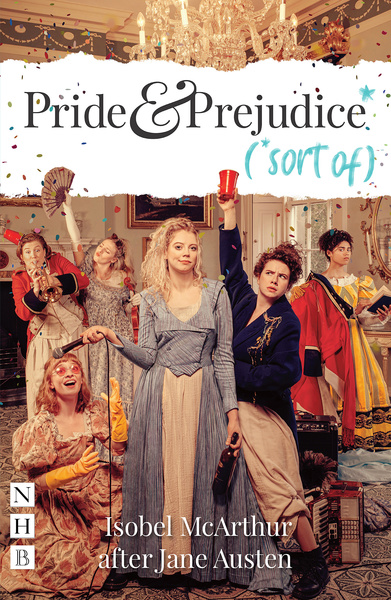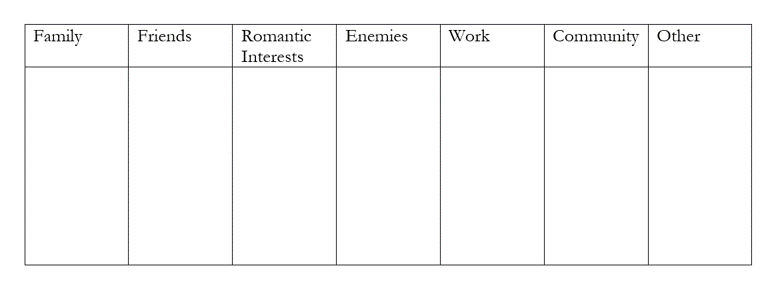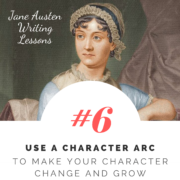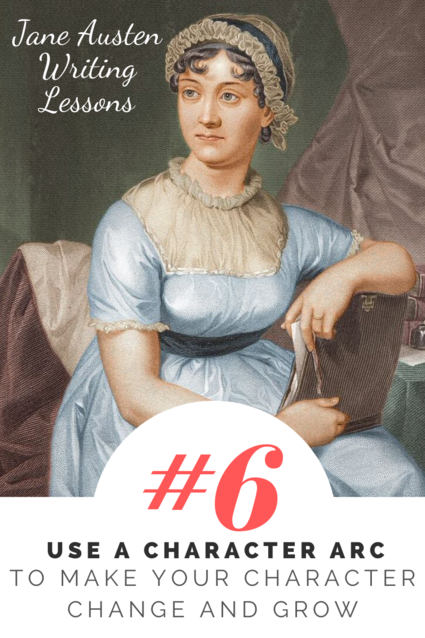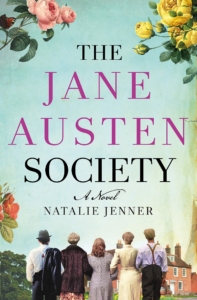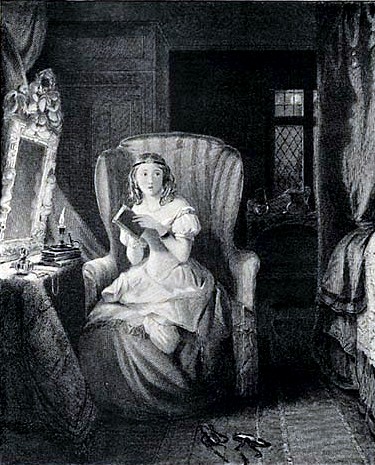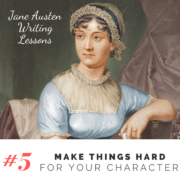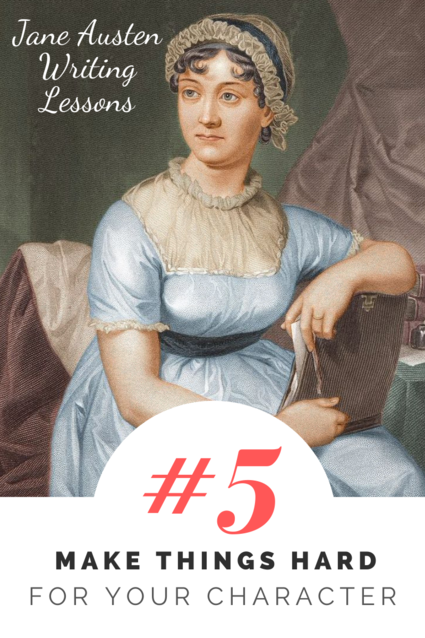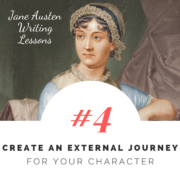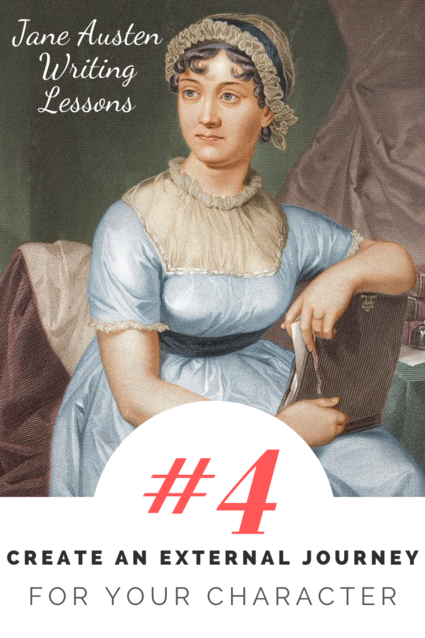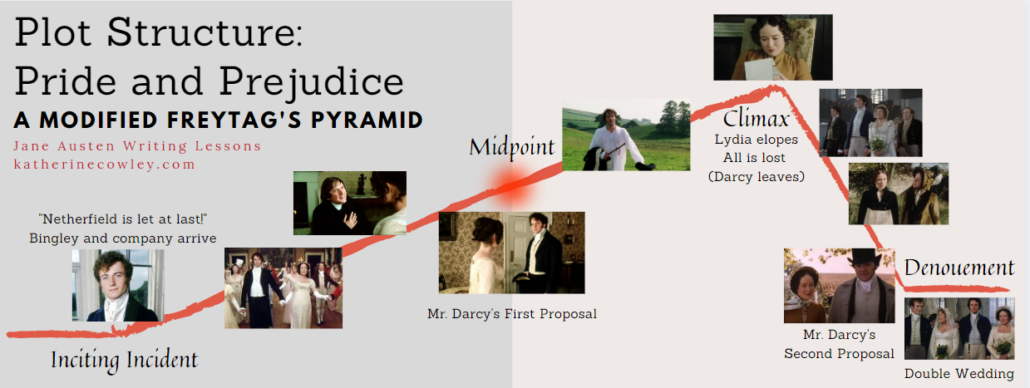#8: Use Setting to Influence Plot and Character
One of the most famous scenes from the book Emma occurs at Box Hill, a hill popular as a sightseeing attraction both in Jane Austen’s time and today. (Sadly, visiting Box Hill is an uncompleted item on my bucket list.)
A view from Box Hill by Benjamin Rusholme (Creative Commons license).
In this scene, Emma’s flaws are brought to the forefront: in an attempt to be clever and keep attention on herself, Emma is cruel to Miss Bates.
“Ladies and gentlemen—I am ordered by Miss Woodhouse to say…that she requires something very entertaining of each of you….[she] demands from each of you either one thing very clever…two things moderately clever[,] or three things very dull indeed, and she engages to laugh heartily at them all.”
“Oh, very well,” exclaimed Miss Bates, “then I need not be uneasy. ‘Three things very dull indeed.’ That will just do for me, you know. I shall be sure to say three dull things as soon as ever I open my mouth, shan’t I—(looking round with the most good-humoured dependence on everybody’s assent)—Do not you all think I shall?”
Emma could not resist.
“Ah! ma’am, but there may be difficulty. Pardon me—but you will be limited as to number—only three at once.”
Miss Bates, deceived by the mock ceremony of her manner, did not immediately catch her meaning; but, when it burst on her, it could not anger, though a slight brush showed that it could pain her.
“Ah!—well—to be sure. Yes, I see what she means, (turning to Mr. Knightley,) and I will try to hold my tongue. I must make myself very disagreeable, or she would not have said such a thing to an old friend.”
This scene’s effectiveness is dependent on its setting for two reasons:
- This setting has brought all of these characters together.
- The setting has created a set of trying circumstances for the characters.
In fiction, the setting of a scene should always be an intentional choice.
In Emma, many of the scenes do occur in Emma’s home, Hartfield. This is very deliberate: in many ways, Emma is trapped by having a hypochondriac as a father (the narrator calls him a “valetudinarian”). Yet there is still a large amount of variability in the settings, even if many of them happen at home or close to home. At seven miles away, Box Hill is the farthest Emma goes from home over the course of the novel, and this is a significant event for the characters, a day planned well in advance.
Setting influences plot. characters.
The choice of the setting should influence both the plot and the characters.
The narrator describes it as a “very fine day for Box Hill,” and everyone commences the seven-mile journey there in good spirits:
Seven miles were travelled in expectation of enjoyment, and every body had a burst of admiration on first arriving; but in the general amount of the day there was deficiency. There was a languor, a want of spirits, a want of union, which could not be got over.
Much of the tension of the scene is caused by contrast between the high expectations for Box Hill and the lack of enjoyment and feeling. Two hours are spent walking around the hill and seeing the sights, yet throughout the entire time, they are plagued by division and separation. In Emma’s opinion, people are behaving in a manner that is “dull” and “insufferable.”
Perhaps it is this struggle with the setting that brings Emma to an internal lowness that invites her to act in an outwardly low manner. (When I am tired, hungry, or overheated, I definitely lose some of my charming personality.)
After her rudeness, the group continues the conversation for a few more minutes but soon breaks apart:
Even Emma grew tired at last of flattery and merriment, and wished herself rather walking quietly about with any of the others, or sitting almost alone, and quite unattended to, in tranquil observation of the beautiful views beneath her.
Yet she does not have the opportunity to enjoy the beauty: in the next sentence, the carriages arrive. In a moment where they are alone, Mr. Knightley reproaches Emma for her behavior.
“How Could You Be So Unfeeling?” Knightley reproaches Emma in the 2020 film Emma. (Gif from Tenor.)
After this confrontation by Knightley, which once again occurs in stark contrast to the beautiful surroundings, Emma feels the full weight of guilt. The chapter ends with the following line:
Emma felt the tears running down her cheeks almost all the way home, without being at any trouble to check them, extraordinary as they were.
A well-chosen setting can have a huge influence on the plot and the characters, and the way in which the setting is described provides a lens into the viewpoint character’s thoughts and emotions.
Exercise 1:
Read the following dialogue, which will become part of a short break-up scene:
“I just don’t think it’s going to work out between us,” said Amisha.
“I’m not worried,” said Jesse. “We always get through things.”
“Yes, we could get through this,” said Amisha. “But that’s not what I want. I’m done. Done with this, done with us.”
Now choose two different settings and write two versions of this short scene (two to three paragraphs each). Make sure to not only add description, but also movement and action. Consider what they might be doing in the setting (i.e. cooking dinner in Amisha’s kitchen), how the characters would describe the setting, and how the setting will impact how both the characters and the reader.
Example settings:
- A kitchen
- The beach
- A freeway
- A museum
- A soccer game
Exercise 2:
Choose one of your favorite books or movies, and without rereading or rewatching it, make a list of as many settings as you can from the story. These can be broad settings (i.e. England, the town of Highbury, etc.) or more specific settings (i.e. Mr. Elton’s house, the strawberry patch, etc.).
Once your list is complete, consider the following question: How does the setting impact the plot and the characters in this story?
Exercise 3:
Option 1: Use a scene that you plan to write in a book or short story. Come up with three possible settings that could work well at fulfilling the purposes of the scene. For each setting, list the key attributes of the setting, the advantages of using the setting, and the disadvantages of using the setting.
Option 2: Take a scene that you have already written and rewrite it using a new setting. Which do you prefer? What are the advantages and disadvantages of each one?

